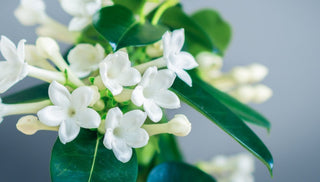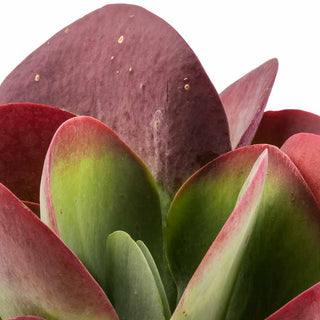☘ Origin: China
☘ Family: Oleaceae
☘ Botanical Name: Jasminum polyanthum
☘ Common Name: Pink Jasmine
Symbolism: Jasmine flowers are symbolic of new love, platonic affection, femininity, and modesty. Pink Jasmine makes a lovely gift for girls, female relatives and friends.
🍃 Shop Your Pink Jamsine Today!
🔆 Light
Jasmine requires a sunny location in the home. Space near a south window and provide a trellis or support. Give your plant a turn every few days to expose all sides to light for even growth from all sides.
💧 Water
Potted Jasmine requires water multiple times a week, especially in the hotter months. Water it when the top 2.5cm of the soil is dry. Soil needs to be moist but not soggy.
To give your plant the absolute best, room-temperature rainwater and bottled spring water are your best options. Any water containing sugar or salt will hurt your plant!
☁️ Humidity
Try to maintain 40-50% relative humidity around Jasmine. Central heating and A/C can cause the humidity to drop drastically indoors. Discover easy ways to increase humidity for your houseplant or gently mist it 2-3 times a week using a filtered-water spray.
🌡️ Temperature
Jasmine needs to stay cool with well-circulated air, and temperature between (15-24°C).
🧴️ Food
Feed Jasmine with fertilizer that is rich in potassium and phosphorus. During the growing season of spring and summer, liquid fertilizer can be fed to the plant every two weeks.
🐾 Toxicity
All clear. Nontoxic to cats, not poisonous for dogs or horses.
With enough sun and the right watering and feeding, Jasmine flowers will stay open and fresh for you to enjoy for several months. Give your Jasmine plant cool temperatures (5-16°C) for 6 weeks in fall to set buds.



